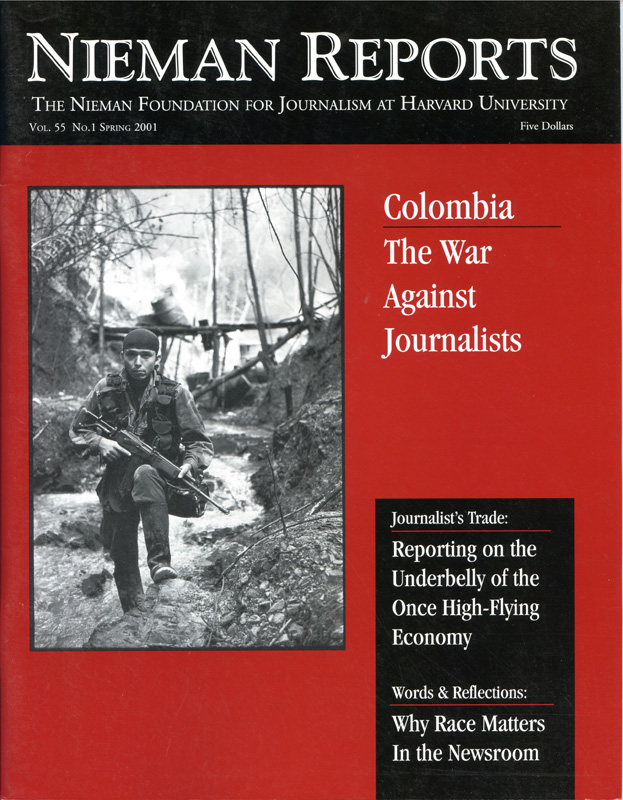Lynda McDonnell, political editor for the St. Paul Pioneer-Press and former poverty reporter, finds much “ingenious, committed reporting” on the lives of the poor but also sees “missed opportunities.” Why? As McDonnell writes, “poverty and poor people don’t have to be covered, as city hall and schools do. A newspaper can do without. Neither advertiser nor reader is likely to demand more coverage.” Jonathan Kaufman, a reporter and editor at The Wall Street Journal, observes that “stories about race and class, social justice and inequality…provoke rolling-of-the-eyes, distracted nods, impatient dismissals—not just from readers but from editors, too. ‘There you go again,’ their expressions seem to say.”
Nick Kotz, who reported on poverty during the 1960’s for The Washington Post, offers a valuable historic perspective. “Too often, in my opinion, reporting about questions of social and economic justice has been trendy, superficial and sporadic—if not simply missing from the news agenda…. America’s problems of race and poverty…rarely are assigned a news priority that calls for sustained, penetrating coverage.” Peter Edelman, professor of law at Georgetown University Law Center, writes from the perspective of a former policymaker who worked on welfare reform. “Some of the most important questions in the coverage of poverty today are ones that begin with the word ‘why.’” He raises questions that journalists might want to ask.
Diana Nelson Jones, a writer, and Steve Mellon, a photographer, recently went to Appalachia to report for the Pittsburgh Post-Gazette about what’s happened to poverty since the war on it began there. They share insights on how they reported the story and what they found. Jones, who grew up in West Virginia, writes, “Its negative portrayals are all too negative, and what is positive about the region remains all but unknown outside its borders.” Mellon recalls a man who, when he learned they were journalists, shouted at him, “You going to make us look like a bunch of idiots, like those last reporters did?”
Roland De Wolk, creator and producer of KTVU Channel 2 News in the San Francisco Bay Area, writes about “The Price of Prosperity.” This collaborative journalism project involving print, broadcast and the Internet, is examining the “costs” that accompany an economic boom which often go unreported. One story highlighted the otherwise barely noticed rise in child suicides. Raj Jayadev, editor of Silicon Valley DE-BUG, tells about the experience of young, low-wage workers publishing their stories of life in high-tech America. It has become “a vehicle for youth who feel that they live on the margins in Silicon Valley,” Jayadev writes.
Photographer Harvey Wang shares his eyes’ view of life on the Bowery. “The main point,” he says, “was to document the humanity behind these forgotten façades….”
Nick Kotz, who reported on poverty during the 1960’s for The Washington Post, offers a valuable historic perspective. “Too often, in my opinion, reporting about questions of social and economic justice has been trendy, superficial and sporadic—if not simply missing from the news agenda…. America’s problems of race and poverty…rarely are assigned a news priority that calls for sustained, penetrating coverage.” Peter Edelman, professor of law at Georgetown University Law Center, writes from the perspective of a former policymaker who worked on welfare reform. “Some of the most important questions in the coverage of poverty today are ones that begin with the word ‘why.’” He raises questions that journalists might want to ask.
Diana Nelson Jones, a writer, and Steve Mellon, a photographer, recently went to Appalachia to report for the Pittsburgh Post-Gazette about what’s happened to poverty since the war on it began there. They share insights on how they reported the story and what they found. Jones, who grew up in West Virginia, writes, “Its negative portrayals are all too negative, and what is positive about the region remains all but unknown outside its borders.” Mellon recalls a man who, when he learned they were journalists, shouted at him, “You going to make us look like a bunch of idiots, like those last reporters did?”
Roland De Wolk, creator and producer of KTVU Channel 2 News in the San Francisco Bay Area, writes about “The Price of Prosperity.” This collaborative journalism project involving print, broadcast and the Internet, is examining the “costs” that accompany an economic boom which often go unreported. One story highlighted the otherwise barely noticed rise in child suicides. Raj Jayadev, editor of Silicon Valley DE-BUG, tells about the experience of young, low-wage workers publishing their stories of life in high-tech America. It has become “a vehicle for youth who feel that they live on the margins in Silicon Valley,” Jayadev writes.
Photographer Harvey Wang shares his eyes’ view of life on the Bowery. “The main point,” he says, “was to document the humanity behind these forgotten façades….”



